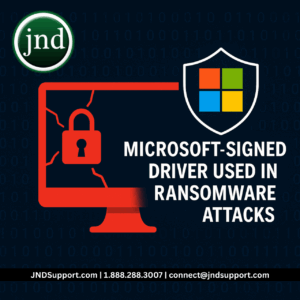Ransomware attacks can be incredibly distressing for businesses, with cyber criminals holding valuable data hostage until a hefty ransom is paid.
Picture this: Your business gets hit by a ransomware attack, and your valuable data is locked away by cyber criminals demanding a huge ransom fee.
You can’t afford to pay it. But there’s a twist – just like those “buy now, pay later” schemes, some ransomware gangs are offering victims payment extension options.
Recent research reveals that ransomware groups are getting creative with their extortion strategies. One group is even offering victims various choices when it comes to their ransom demands. These “choices” include:
Paying to delay the publication of their stolen data, with a standard fee of $10,000… or paying to have their stolen data deleted before it’s made public.
The exact amounts charged are often negotiated with victims, adding a chilling dimension to the whole ordeal.
To increase the pressure on victims, these ransomware groups have added some terrifying features to their web sites. These include countdown timers displaying how much time businesses have before their data is released, view counters, and even tags revealing the victim’s identity and description.
It’s all designed to make victims feel cornered and more likely to give in to the demands.
You might be tempted to pay that ransom to protect your business data. Not so fast. Paying is always a bad idea and here’s why…
Paying doesn’t guarantee that you’ll get your data back or that the cyber criminals won’t demand more money later.
By paying, you’re essentially funding criminal activities, encouraging them to continue their attacks on others.
Paying a ransom might even get you into legal trouble, as some governments have made it illegal to pay cyber criminals.
So, what can you do to safeguard your business from falling victim to ransomware?
- Ensure you have regular, secure backups of your data. This way, you won’t be at the mercy of cyber criminals.
- Educate your staff about the risks of ransomware and train them to recognize phishing emails and suspicious links.
- Invest in robust cyber security software and keep it up to date.
- Keep your systems and software updated with the latest security patches.
- Segment your network to limit the spread of ransomware if one device gets infected.
- Develop a clear incident response plan, so you know exactly what to do if you’re ever hit by a ransomware attack.
Paying cyber criminals rarely makes things better, and we’re seeing businesses that do pay become targets time and time again. Instead, invest in the proactive measures above to help you stay secure.
Don’t wait till you get hit by a ransomware attack give us a call to get your business secure.
1.888.288.3007 | connect@jndsupport.com
Article used with permission from The Technology Press.

Microsoft-Signed Drivers Used in Ransomware Attacks: When Trust Becomes a Threat
Facebook Twitter LinkedIn Cybercriminals have crossed a new threshold: they’re now exploiting Microsoft-signed drivers — software components that should be among the most trusted on

Ransomware in the Age of AI: The New Battleground and How JND Consulting Group Keeps You Safe
Facebook Twitter LinkedIn In recent years, ransomware has evolved from a relatively crude cyber threat to a sophisticated, AI-fueled weapon capable of disrupting businesses, governments,

Overview of Department of Financial Services Cybersecurity Regulation
Facebook Twitter LinkedIn Navigating the New Cybersecurity Landscape In 2023, the Department of Financial Services (DFS) introduced amendments to its Cybersecurity Regulation, with the implementation
